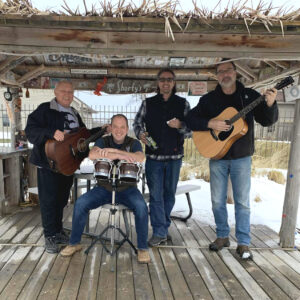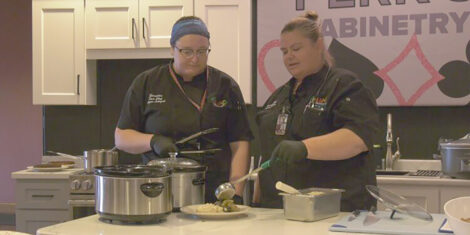What’s on the menu switches in November
Riverside
- A snowshoe hare is already white for winter and hoping for some snow as camouflage. In November it eats bark, cedar and twigs. (Karen Wils photo)
- Karen Rose Wils

A snowshoe hare is already white for winter and hoping for some snow as camouflage. In November it eats bark, cedar and twigs. (Karen Wils photo)
ESCANABA — The food chain clanks in the cold November wind!
There are many days of the “great greys” as the daylight grows scarce. A bit beyond the harvest season, a new song of survival plays through the north woods.
It is as simple as a muted blur of grey wings and one grey mouse is gone. The owl will eat well and sing beneath the balsams. The squirrels join in the November food frenzy. Bushy tails flit in the frigid air as busy paws find the last of the acorns, beechnuts and sunflower seeds. The squirrel stashes these tasty treats in a hollow tree for a below-zero day.
The chipmunk is home sweet home in his nest below the ground. Wrapped in a blanket of maple leaves and curled up and covered with its tail, this little guy will be cozy until a spring thaw.
While the tamarack trees have the last yellow hurrah of the year, the handsome hare with the stone-cold black eyes, sits still.

Karen Rose Wils
Molted with white fur taking over the grey fur, the hare not only changes its color but it changes its eating habits, too. Sweet grasses and clover give way to aspen bark and cedar limbs.
As winter closes in the deer change from red to dark grey. From the meadow and farm fields lush with apples, vegetables and hay to the swamps and woodlands to browse cedar and twigs, the whitetails change their meal plan.
In the meantime, one of the bucks may become the prize of a human hunter. Venison is now a new dish served in the homes of successful hunters. Our diet changes with the changing seasons, too. The kitchen garden is done for the year, so winter veggies like squash, rutabagas and Brussel sprouts are steaming up on stoves.
The goldfinches devour the last of the wild thistle heads. The coyote catches a rabbit. The big, hungry steelhead trout heads out of the big lake waters into icy-cold rivers and streams seeking fish eggs and nymphs to feast on.
An eagle watches the silver bubbling water for the trout. A wily, old fisherman is there too with a fly rod and high hopes of fish for supper.
There is a poetic beauty in the predator and prey relationship. This ancient rhythm of Mother Nature’s cannot be heard until you have survived several winters close to the wilds. Once you have seen a good, healthy balance in plants, trees, animals, birds and fish, there’s nothing more awesome.
We are so fortunate here in Upper Michigan to able to see, hear and taste the changing of the seasons.
So, dig the last of the potatoes and carrots. Put the last of those grapes and apples to ferment to wine.
The food chain in the U.P. is a strong, pure and organic one. Let’s work to keep it that way. Say a table Grace and let’s eat!







